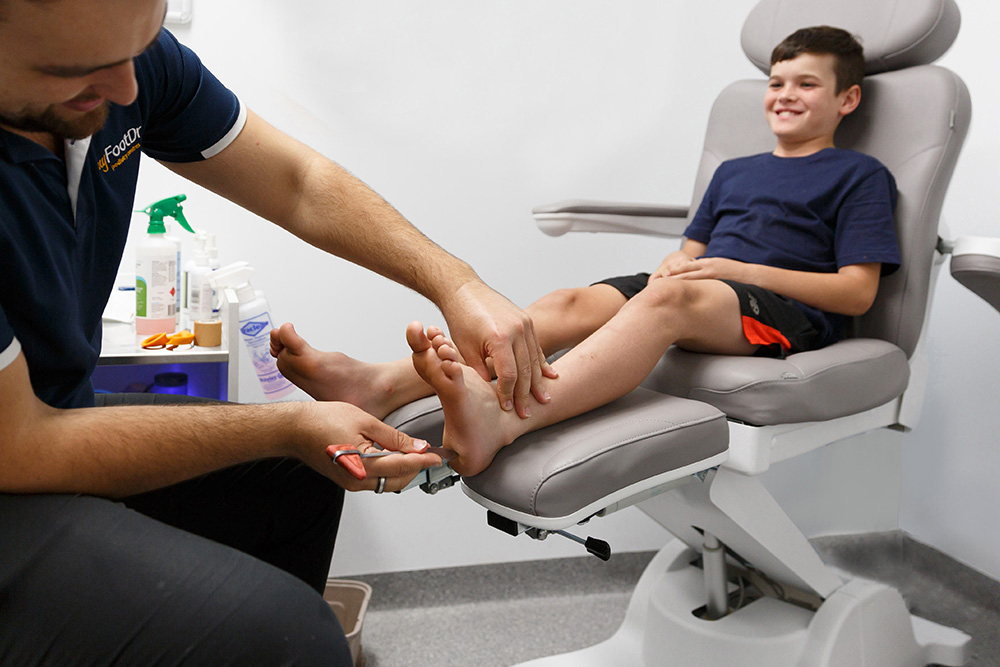
 Did you know as many as 81 per cent of parents have never taken their child to visit a Podiatrist?
Did you know as many as 81 per cent of parents have never taken their child to visit a Podiatrist?
Children’s feet and legs develop rapidly, and there are a surprising number of common foot problems that can be difficult for parents to identify.
 What are the biggest problems with little feet?
What are the biggest problems with little feet?
Children can experience everything from delayed walking, tippy-toeing, flat feet and bowed legs, pigeon toeing and clumsiness, ingrown toenails, plantar warts and more.
It is important for parents to better understand how to properly care for growing feet. This includes who to turn to for professional advice, can prevent these conditions from developing into lifestyle-limiting issues.
Why are shoes so important?
Children spend up to 1,000 hours in school shoes each year, not to mention different shoes for different sports and other activities.
It doesn’t matter if you spend $10 or $100 on shoes for your children, if they don’t offer the right support and enough growing room for their feet to naturally develop, then your child is at risk of pain, deformities, poor balance and posture.
Despite feet growing quickly at a young age, almost two-thirds (61%) of children aged up to 17 years haven’t had their foot professionally measured within the last 12 months.
Why we should treat little feet like growing teeth
Preventing common conditions is a far smarter way to go about children’s foot health than trying to stomp out a problem when it’s too late.
Just like visiting a dentist from a young age to ensure teeth are growing straight and healthy, children should visit a Podiatrist before they start school and undergo a check-up at least annually, or more frequently if they experience pain or other symptoms.
 What can a Podiatrist do?
What can a Podiatrist do?
Podiatrists take a detailed history, perform a physical assessment, use video walking analysis and 3D foot scans to discover any issues and develop a treatment and management program.
Prescription or custom-made foot orthotics (shoe inserts), are a common treatment prescribed for children to support and align the natural shape of the foot and ankle, and improve overall posture and foot function.
What your feet say about your children’s feet.
The Healthy Little Feet study showed that around 64 per cent of Australian parents don’t realise that many common foot conditions seen in children can be genetic and passed on by their parents.
How can my child access a Podiatrist?
More than two-thirds (67%) of parents either think you need a GP referral to access a Podiatrist or aren’t sure. Making an appointment with a Podiatrist can be done directly without visiting your doctor.
Many families were unaware that podiatry is covered by many Private Health Insurers in their extras policy.
My FootDr is encouraging all parents to have their children’s feet checked by a Podiatrist.
Our 5 Big Tips for Healthy Little Feet
-
Screen your child early for immediate detection of common problems
-
Stomp out problems immediately if pain or symptoms persist
-
Choose the right footwear for active, growing feet
-
Wear custom shoe orthotics prescribed by a Podiatrist
-
Commit to an annual check-up
About the survey
The research was commissioned by Australia’s leading podiatry group, My FootDr podiatry centres. The survey, undertaken by Pureprofile, included 600 respondents from across Australia with children aged up to 17 years of age.


